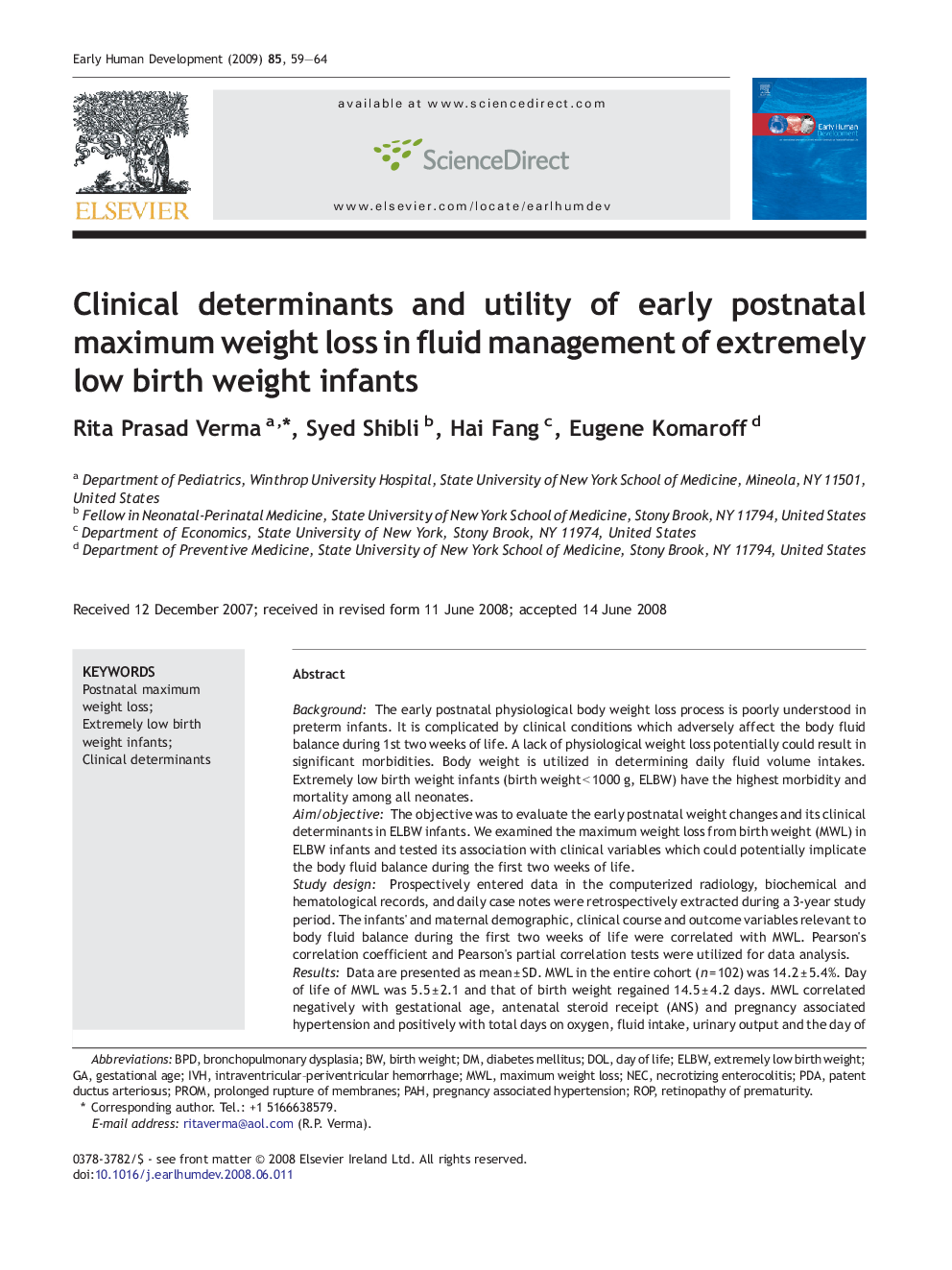| کد مقاله | کد نشریه | سال انتشار | مقاله انگلیسی | نسخه تمام متن |
|---|---|---|---|---|
| 3917974 | 1252158 | 2009 | 6 صفحه PDF | دانلود رایگان |

BackgroundThe early postnatal physiological body weight loss process is poorly understood in preterm infants. It is complicated by clinical conditions which adversely affect the body fluid balance during 1st two weeks of life. A lack of physiological weight loss potentially could result in significant morbidities. Body weight is utilized in determining daily fluid volume intakes. Extremely low birth weight infants (birth weight < 1000 g, ELBW) have the highest morbidity and mortality among all neonates.Aim/objectiveThe objective was to evaluate the early postnatal weight changes and its clinical determinants in ELBW infants. We examined the maximum weight loss from birth weight (MWL) in ELBW infants and tested its association with clinical variables which could potentially implicate the body fluid balance during the first two weeks of life.Study designProspectively entered data in the computerized radiology, biochemical and hematological records, and daily case notes were retrospectively extracted during a 3-year study period. The infants' and maternal demographic, clinical course and outcome variables relevant to body fluid balance during the first two weeks of life were correlated with MWL. Pearson's correlation coefficient and Pearson's partial correlation tests were utilized for data analysis.ResultsData are presented as mean ± SD. MWL in the entire cohort (n = 102) was 14.2 ± 5.4%. Day of life of MWL was 5.5 ± 2.1 and that of birth weight regained 14.5 ± 4.2 days. MWL correlated negatively with gestational age, antenatal steroid receipt (ANS) and pregnancy associated hypertension and positively with total days on oxygen, fluid intake, urinary output and the day of life when birth weight was regained. All these correlations were lost after controlling for GA except for the day of life when birth weight was regained. MWL did not correlate with RDS or its severity, hypotension, PIE, IVH, PDA and length of stay. Over 91% infants had MWL within 3.1–25%. Male, Caucasian and ELBW infants unexposed to ANS tended to have weight loss in excess of 25%.ConclusionMWL is governed by maturation and is not affected by concurrent clinical factors including fluid intakes during the 1st two weeks of life in ELBW infants. MWL within the estimated range of 14.5 + 4.2% of birth weight does not promote morbidities. Male, Caucasian and ELBW infants unexposed to ANS are susceptible to excessively high weight losses in early postnatal period.
Journal: Early Human Development - Volume 85, Issue 1, January 2009, Pages 59–64